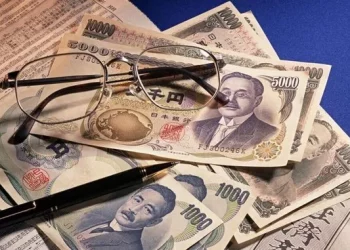Foreign exchange (FX) trading, also known as forex or FX trading, is a global market where currencies are exchanged against one another. It’s one of the most active and liquid markets in the world, with trillions of dollars being traded daily. Among the many factors influencing currency value, exchange rates are particularly important. When it comes to foreign exchange trading, understanding how much one currency is worth in relation to another is vital for both traders and investors. In this article, we will examine the conversion of $4,000 US dollars (USD) into Australian dollars (AUD), exploring the relevant factors that influence the exchange rate and what this means for individuals looking to exchange currency, as well as traders operating in this market.
Understanding Currency Exchange Rates
Before diving into the specifics of how much $4,000 US is worth in Australian dollars, it’s essential to understand what an exchange rate is. Simply put, an exchange rate is the value of one currency in terms of another currency. For instance, the exchange rate between the US dollar (USD) and the Australian dollar (AUD) determines how many Australian dollars one can get by exchanging a set amount of US dollars.
In the forex market, exchange rates fluctuate constantly due to various factors such as economic data, market sentiment, interest rates, and geopolitical events. These fluctuations are what make forex trading a profitable venture for many, but they can also make it a bit confusing for those unfamiliar with how exchange rates work.
Factors Affecting the US Dollar to Australian Dollar Exchange Rate
The exchange rate between the US dollar and the Australian dollar doesn’t stay the same all the time. It’s constantly changing because of several key factors. Some of the major drivers of these fluctuations include:
Interest Rates: One of the most significant factors affecting exchange rates is the difference in interest rates set by central banks. The US Federal Reserve (Fed) and the Reserve Bank of Australia (RBA) control their respective countries’ interest rates. If the Fed raises interest rates, it can increase demand for the US dollar, causing its value to rise against other currencies, including the AUD. Conversely, if the RBA raises interest rates, the value of the AUD may increase in comparison to the USD.
Inflation Rates: Inflation is another key determinant. A country with lower inflation rates compared to another typically sees its currency appreciate in value. If the US experiences higher inflation than Australia, the USD could lose value relative to the AUD.
Economic Data: Economic indicators such as GDP growth, unemployment rates, retail sales, and manufacturing output also play a role in determining exchange rates. Strong economic data from the US tends to strengthen the USD, while weak economic data can weaken it. The same applies to Australia. Economic performance data from both countries is scrutinized by traders and investors to predict future currency movements.
Commodity Prices: The Australian dollar is often influenced by the prices of commodities, especially metals and minerals, which are vital to Australia’s economy. A rise in commodity prices typically supports the value of the AUD, while a drop in commodity prices can lead to a weakening of the AUD against the USD.
Political Stability: Political events and changes in government policies can have a significant impact on exchange rates. Political instability in either the US or Australia can cause uncertainty in the markets and lead to fluctuations in their currencies.
Global Events: Geopolitical events, natural disasters, and global economic trends can also affect exchange rates. For example, the economic impact of the COVID-19 pandemic caused significant shifts in currency values across the world. Central banks, such as the US Fed and the RBA, often respond to such events with monetary policies that affect exchange rates.
Historical Exchange Rates: US Dollar to Australian Dollar
To gain a better understanding of the fluctuations in the exchange rate, it’s helpful to take a look at historical trends. Over the past few decades, the USD/AUD exchange rate has seen considerable volatility, influenced by various global events, shifts in economic policies, and changes in market sentiment.
For example, in the early 2000s, the Australian dollar was weaker than the US dollar, with the exchange rate hovering around 0.50 USD to 1 AUD. However, in the mid-2000s, the AUD began to strengthen significantly due to rising commodity prices, particularly in the mining and resource sectors, which are major contributors to Australia’s economy. By the time of the global financial crisis in 2008, the AUD had risen to parity with the USD, and in some periods, it even exceeded 1 USD to 1 AUD.
Since then, the exchange rate has fluctuated, but the AUD has generally remained weaker than the USD, hovering around 0.70 to 0.80 USD for 1 AUD in recent years. However, these values are not static and can change quickly based on global economic events, market sentiment, and policy changes from central banks.
Converting $4,000 USD to Australian Dollars
Now, let’s focus on the question at hand: how much is $4,000 US in Australian dollars?
To calculate this, we need the current exchange rate between the US dollar and the Australian dollar. Exchange rates can be checked on various platforms, including financial websites, currency converter tools, or by looking at the rates provided by banks and currency exchange services.
At the time of writing, the exchange rate between the US dollar (USD) and the Australian dollar (AUD) is approximately 1 USD = 1.50 AUD (this is just an example rate, and the actual rate may vary).
Step-by-Step Conversion:
To convert $4,000 USD into AUD, the formula is:
Amount in AUD = Amount in USD x Exchange Rate
Substituting the values:
Amount in AUD = $4,000 x 1.50
Amount in AUD = $6,000
So, with an exchange rate of 1 USD = 1.50 AUD, $4,000 US would be equivalent to $6,000 Australian dollars.
Exchange Rate Variability
It’s important to note that exchange rates are constantly changing, and the rate we have used may not be the same when you exchange currency. Even in the span of a few hours, the exchange rate can fluctuate due to market conditions and the factors discussed earlier. Therefore, when planning an international transaction or trade, it is important to check the current exchange rate to get an accurate conversion.
Impact of Exchange Rates on Forex Trading
For forex traders, the fluctuations in the USD/AUD exchange rate present opportunities to profit. By predicting whether the US dollar will appreciate or depreciate relative to the Australian dollar, traders can make informed decisions about buying and selling currencies. The volatility of exchange rates also provides leverage for traders, who can open positions with a small margin to amplify their potential profits.
However, forex trading involves a significant degree of risk. Even experienced traders can face losses due to sudden market shifts, geopolitical events, or unexpected economic data. For those involved in forex trading, it’s essential to employ strategies such as technical analysis, fundamental analysis, and risk management techniques to minimize potential losses.
What Does This Mean for Individuals Exchanging Currency?
For individuals planning to travel, invest, or conduct business between the United States and Australia, the exchange rate can have a significant impact on the amount of local currency they receive when exchanging their money. Let’s say you’re a US citizen planning a trip to Australia and you have $4,000 to exchange.
At an exchange rate of 1 USD = 1.50 AUD, you would receive $6,000 AUD for your $4,000 USD. However, it’s important to keep in mind that currency exchange providers, such as banks, airports, and online services, often charge fees or offer slightly less favorable exchange rates than the market rate. This can affect the final amount of AUD you receive after the conversion.
For businesses, the exchange rate can also impact profit margins. If a US-based company is importing goods from Australia or vice versa, the cost of those goods can vary depending on the prevailing exchange rate. A stronger US dollar relative to the Australian dollar makes imports cheaper for US companies, while a weaker US dollar makes Australian imports more expensive.
Conclusion
The conversion of $4,000 US to Australian dollars is not a straightforward, fixed amount but depends on the current exchange rate between the two currencies. Factors such as economic data, interest rates, inflation, commodity prices, and geopolitical events all influence the value of the US dollar and the Australian dollar. By understanding how these factors work, both individuals and traders can make informed decisions when exchanging currency or trading in the forex market.
At an example exchange rate of 1 USD = 1.50 AUD, $4,000 US would equal $6,000 Australian dollars. However, the exchange rate is constantly fluctuating, so it’s essential to check current rates and factor in any additional fees or commissions from currency exchange services.
Whether you’re planning a trip to Australia, engaging in international trade, or participating in forex trading, understanding exchange rates is critical to making informed financial decisions. Stay updated on the market and take advantage of favorable exchange rates to maximize the value of your currency exchanges.
Related Topics:



























